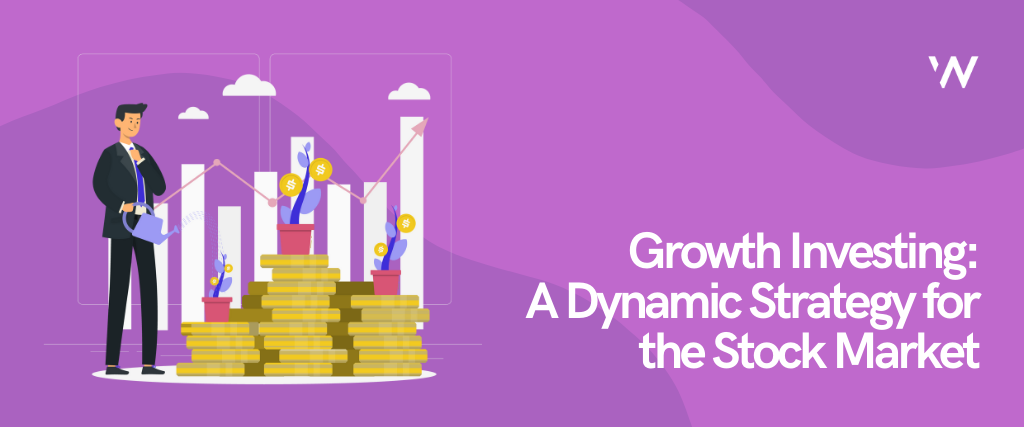An Introduction to S&P 500 (Standard & Poor's 500)

In this comprehensive guide, we'll take a deep dive into the world of investing, focusing primarily on the S&P 500. We'll begin by understanding the fundamental importance of investing, before moving on to explore the basics of the S&P 500, its workings, and the reasons to invest in this index. We'll also provide insight into the benefits of diversification and present a historical perspective on the S&P 500's performance. Moreover, we'll underscore the power of Index Funds and Mutual Funds and guide you step-by-step on the process of investing in S&P 500 stocks, including the role of brokerage accounts. Acknowledging that investing isn't without its risks, we'll help you identify potential pitfalls and share practical tips and important information to mitigate them and maximize financial returns.
Importance of Investing
Investing is a powerful way to build wealth over time. By placing your money in various investment vehicles such as stocks, bonds, or index funds, like the S&P 500, you're giving your money the opportunity to grow by earning returns on those investments. This growth is driven primarily by the power of compounding, where your earnings generate even more earnings over time. Investing is not just about amassing wealth, but it also offers financial freedom, security, and the ability to meet long-term financial goals, such as retirement or a child's education. The bottom line is, if you want your money to work for you, investing is the key.
Understanding the Basics
What is the S&P 500?
The S&P 500, or Standard & Poor's 500, is a stock market index that measures the stock performance of 500 large companies listed on stock exchanges in the United States. It is one of the most commonly followed equity indices and is considered the best representation of the U.S. stock market and a bellwether for the U.S. economy. The S&P 500 is a market-capitalization-weighted index, meaning the stocks of larger companies carry more weight.

How does the S&P 500 work?
The S&P 500 is driven by its market-capitalization-weighting methodology. In this system, the larger the market value of a company, the larger its weight in the index. Therefore, changes in the prices of stocks of larger companies have a greater impact on the value of the index than changes in the prices of smaller companies. It's critical to note that the S&P 500 is a passive index, meaning it doesn't involve active management. Instead, a committee selects the companies included in the index based on factors such as market capitalization, financial viability, liquidity, and length of time being publicly traded. The goal of the S&P 500 is to provide investors a broad, representative, and easily replicable benchmark for the U.S. stock market.
Why Invest in the S&P 500
Diversification Benefits
One of the main reasons investors turn to the S&P 500 is the inherent advantage of diversification, one of the most important strategies when investing in any kind of stocks. When you invest in the S&P 500, you're investing in a broad spectrum of 500 large-cap companies across various sectors. This blend of different industries and companies helps to spread the risk associated with investment. Instead of putting all your capital into shares of a single stock, the S&P 500 allows one to spread that out across multiple companies. So, if one sector or company performs poorly, the effect on your entire portfolio is minimized because your investment is not solely tied to the performance of that one entity. This diversification can help to balance out periods of volatility, reduce the risk of substantial losses, and contribute towards steadier returns over time. Always remember, in investing, it’s not about putting all your eggs in one basket, but rather spreading them out to reduce risk while still aiming for a beneficial return.

Historical Performance of the S&P 500
The S&P 500 has a long and proven track record of strong performance. Since its inception in 1957, the index has delivered an average annual return of approximately 10%, adjusting for inflation and excluding dividends. This impressive record is primarily driven by the robust performance of the U.S. economy and its companies over these years. For investors, and particularly novice ones, this can be a great hedge against inflation. With US inflation rates averaging 5.42% from 1971-2023, and S&P 500 returns averaging 10% in that time, this one passive investment could protect against the devaluation of money over decades.
The S&P 500 reached its first close above 100 in 1968 and first closed above 1,000 in 1995. In the last decade, the S&P 500 has almost tripled, reaching new heights and closing above 4,000 for the first time in 2021. However, it's important to note that while the index has shown significant growth over the long term, it has also experienced periods of volatility and declines, notably during economic downturns and market corrections. Nonetheless, the enduring strength and resilience of the S&P 500, along with the average annual returns, make it a compelling choice for new investors looking to buy stocks for long-term, sustained growth.

The Power of Index Funds
Index funds, such as those tracking the S&P 500, represent a powerful tool in the arsenal of any savvy investor. At its core, an index fund is a type of mutual fund or exchange-traded fund (ETF) designed to follow certain preset rules so that the fund can track a specific basket of underlying investments. Index funds associated with the S&P 500, for example, will hold the same stocks as those listed in the index, mirroring its performance closely.
One of the fundamental strengths of index funds is their passive management. Unlike actively managed funds where fund managers attempt to beat the market through seemingly savvy stock picks and closely following developments at these companies, index funds simply mimic the market index. This approach reduces the costs associated with frequently buying and selling stocks. Therefore, index funds typically have lower expense ratios, making them an affordable option for many investors.
Moreover, index funds offer an inherent level of diversification. By investing in an S&P 500 index fund, your investment is spread across 500 of the largest U.S. companies. This broad-based exposure helps mitigate the risk associated with investing in single stocks, making index funds less volatile and more resilient to the fluctuations of individual stocks.
In addition, index funds capitalize on the overall trend of the market to grow over time. While short-term market swings can be unpredictable, the long-term direction of the market has historically been upward. By investing in an index fund, investors can tap into this long-term growth potential.

In summation, the power of index funds lies in their simplicity, affordability, diversification, and potential for long-term growth. They are an excellent vehicle for investors who believe in the strength of the market and are willing to ride out short-term volatility for potential long-term gains.
How to Invest in the S&P 500
Investing in the S&P 500 is a straightforward process that is accessible for investors of all levels of experience. Here's a step-by-step guide on how you can start investing:
1. Set Clear Financial Goals
Before you start investing, it's important to understand your financial goals and investment objectives. Are you saving for retirement, a down payment on a home, your child's education, a vacation fund, or another long-term goal? Knowing what you are investing for and what you want from your investments will help guide your investment strategy and timeline.
2. Choose the Right Brokerage Account
To invest in the S&P 500, you will need a brokerage account. There are many online brokers to choose from, each with their own advantages and disadvantages. Some factors to consider when choosing a broker are: fees, customer service, account types (like IRAs, individual or joint accounts), and investment options.
3. Decide Between ETF or Mutual Fund
Next, you'll need to decide if you want to invest in an ETF (exchange-traded fund) or a mutual fund. ETFs are traded like stocks, can be bought and sold throughout the trading day at fluctuating prices, and often have lower expense ratios. Mutual funds, on the other hand, are only priced at the end of the trading day and might require a minimum investment.
4. Select your S&P 500 Index Fund
There are many S&P 500 index funds to choose from. Be sure to compare the expense ratios of different funds. A lower expense ratio can save you money in the long run.
5. Decide How Much to Invest
As a rule of thumb, only invest money that you won't need for at least five years. Keep in mind that investing always involves risk, and it's possible to lose money. So plan carefully about your exposure.
6. Make Your Purchase
Once you've decided on your investment amount, you can go ahead and make your purchase. Keep in mind that some mutual funds have minimum investment requirements.
7. Regularly Review Your Investment
Once you are invested, it's important to regularly review your investment. While the S&P 500 is a relatively stable investment, it's still a good idea to check in on your investment at least once a year.
Remember, investing in the S&P 500 is a long-term strategy. While there will be ups and downs, historically, the index has provided solid returns for patient investors.

The Role of Brokerage Accounts
A brokerage account plays a critical role in your investment journey, serving as the primary interface between you, the investor, and the markets. It is essentially an arrangement between an investor and a licensed brokerage firm permitting the investor to deposit funds with the firm and place investment orders through the brokerage. The brokerage carries out these transactions on the investor's behalf and, in return, charges a fee or commission.
There are a variety of brokerage accounts available, ranging from traditional brick-and-mortar companies to modern online platforms. The latter have gained considerable popularity due to their ease of use, lower fees, and the convenience of executing trades from your computer or mobile device. Many also offer additional features, such as research tools, real-time quotes, and educational resources, providing investors with comprehensive support as they navigate the investment landscape.
When selecting a brokerage account, it's crucial to consider factors such as the firm's reputation, the cost of transactions (fees and commissions), the quality of customer service, the robustness of their trading platform, and the availability of additional services that cater to your investment needs. Ultimately, the right brokerage account will align with your investment goals and strategy, facilitating a smooth and successful investing experience.
Risks and Mitigation
Understanding the inherent risks associated with investing in the S&P 500 is an integral part of informed investing. While the index's long-term performance has historically been strong, it's not immune to short-term volatility and market downturns. Economic recessions, geopolitical tensions, and other macroeconomic factors can cause fluctuations in the S&P 500, potentially impacting your investment value.

Moreover, while investing in an S&P 500 index fund provides diversification, it's also subject to market risk, or the possibility that the entire market will decline, affecting the majority, if not all, of the stocks represented in the index.
However, risk should not deter potential investors. Instead, it underscores the importance of a well-considered investment strategy. Regular investment reviews, a diversified portfolio beyond just the S&P 500, and a long-term investment horizon can help mitigate these risks. Simply understanding these risks can guide decisions on how much of your portfolio should be allocated to an S&P 500 index fund.
Remember, every investment comes with some degree of risk, and it's your understanding and management of this risk that paves the way for successful investing.
Tips to Mitigate Risk
When investing in the S&P 500, there are several strategies that can help minimize risk:
- Diversification: Although the S&P 500 itself is inherently diversified, comprising 500 of the largest publicly traded companies in the U.S., you can further diversify by investing in other asset classes such as bonds, real estate, or international stocks.
- Dollar-Cost Averaging: This strategy involves investing a fixed amount in the S&P 500 at regular intervals, regardless of the price. This can minimize risk as it reduces the potential impact of investing a large amount in the index at an inopportune time.
- Long-Term Approach: The S&P 500 tends to grow over the long term, despite short-term market fluctuations. By taking a long-term investment approach, you are more likely to ride out market downturns and benefit from the long-term growth trend.
- Regular Monitoring: Keep an eye on your investments and the broader market conditions. Regularly reviewing your investment portfolio can help you identify and react to changes in the market, potentially minimizing losses.
- Professional Guidance: Consider seeking advice from a financial advisor. They can provide expert guidance tailored to your financial goals and risk tolerance.
Remember, every individual's financial situation and risk tolerance is different. What works for one investor may not work for another. Always do your own research or consult with a financial advisor before making investment decisions.

Key Takeaways
Investing in the S&P 500 is a long-term strategy that has historically provided solid returns for patient investors. It's critical to only invest funds that won't be needed for at least five years due to the inherent risks of investing. Regular reviews of your investment are crucial, at least once a year, as market fluctuations can occur.
Brokerage accounts are the primary interface between investors and markets, with both traditional and online platforms available. When choosing a brokerage, consider the firm's reputation, transaction costs, customer service, platform robustness, and any additional services that align with your investment needs.
While the S&P 500 is a robust index, it can be impacted by economic recessions, geopolitical tensions, and other macroeconomic factors. Mitigation strategies include diversification beyond just the S&P 500, implementing a dollar-cost averaging approach, adopting a long-term view, regularly monitoring investments, and seeking professional advice. The right strategy will depend on each investor's individual financial situation and risk tolerance.
Investing is a journey that requires patience, discipline, and knowledge. While embarking on this journey might seem daunting, especially given the inherent risks associated with the stock market, remember that every successful investor started where you are today. The key to success is to remain focused and unwavering, always keeping your financial goals in sight.
Investing is a Long Game
Strategic and informed investing is not a sprint—it's a marathon. You're playing the long game, and the potential to build substantial wealth over time is incredible. The S&P 500, in particular, offers a solid foundation for your investment portfolio. With its broad exposure to the largest companies in the U.S. economy, it's an opportunity to benefit from the long-term growth and profitability of these corporate giants.
Keep in mind that knowledge is power when it comes to investing. Stay informed about the financial markets and your investments, and never hesitate to seek professional advice when necessary. Use the resources available to you, like financial news, educational articles, and financial advisors, to supplement your understanding and make informed decisions.
Finally, remember that every investor experiences highs and lows—it's part of the journey. But by staying the course, consistently investing, and remaining patient, you're setting yourself up for long-term financial success and better returns. It's your financial future, so take control. With a little perseverance and a lot of knowledge, you're well equipped to make it a bright one.

Our Solution
So, you’ve decided to start making your money work for you. Great! But if you’re new to investing, you’ll probably want some financial expertise to help you on your investing journey, even if you want to start simple by investing in the S&P 500 with a diverse and rewarding portfolio of stocks. If you ask your bank for advice, they will ask for an initial investment in the six figures. At the same time, most investing apps don’t offer any guidance at all.
That’s where Wizest comes in. We created an investing solution to democratize the stock market and remove some barriers to entry that discourage novice investors. We understand the stock market can be intimidating and overwhelming and that most people’s lives are too busy to spend hours analyzing individual companies and making thoughtful investments.
Wizest lets you pick people instead of individual stocks. You can build your team of financial experts by browsing their Expert Profiles and Portfolios like you would on a social media platform. Building your team takes just minutes, replicating the portfolios of Experts with one click after you check out their profiles. It’s like fantasy football for investing, and you can shuffle your team of Experts anytime!
Our platform was designed to make investing simple for new investors, diversification easier for veteran investors, and the financial journey engaging and fun for everyone, regardless of experience level. Our simple subscription model makes it affordable for everyone (the cost of 1 coffee a week), no matter the size of your account, with no hidden fees.
Start investing today to take advantage of our special launch pricing!
Growth Investing - A Dynamic Strategy for the Stoc...
2023-10-17
The fundamental concept of growth investing is finding companies that will to increase in value, pro...
Read morePaying Off Debt: The First Step to Financial Freed...
2023-10-24
Navigating the world of finance can be overwhelming. Creating a budget and paying off debt is the fi...
Read moreHow to Survive a Bear Market...
2023-11-07
There are lots of ways for investors to navigate a bear market in their favor, and there's no better...
Read more


